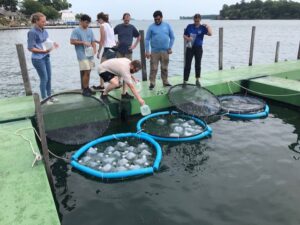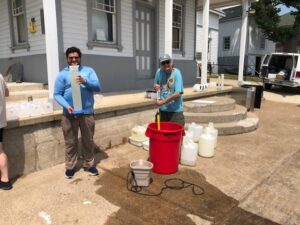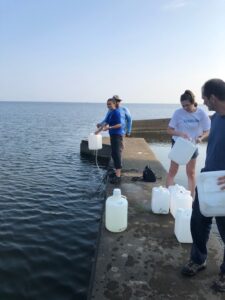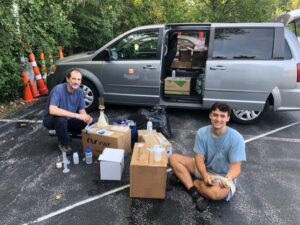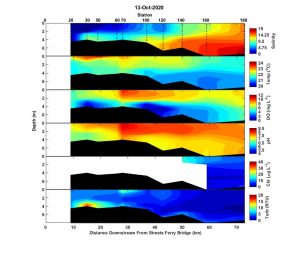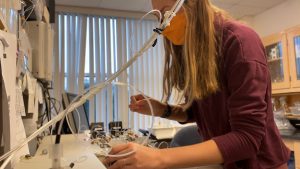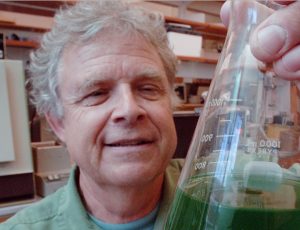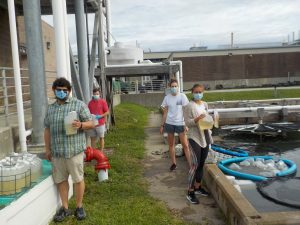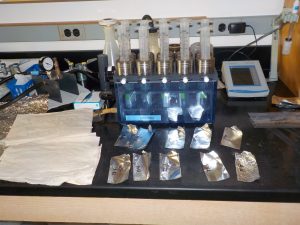Hi all,
I’m playing catch up again.
Conditions on 18 August were about as stratified as they get in the Neuse. From New Bern to the mouth bottom water salinities were more than 10 ppt greater than at the surface. The pycnocline increased in depth from about 2 meters at New Bern to 5 m at the mouth, and waters below the pycnocline were hypoxic/anoxic along that whole stretch. Overall, chl-a levels were low but there was a broad zone of moderate 10-20 ug/L at the surface that extended from station 60 to station 140. A subsurface, thin layer of chl-a > 40 ug/L was observed at station 70. (image below)
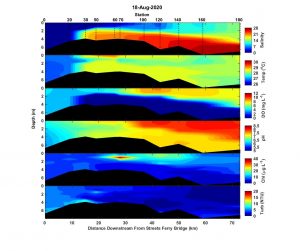
After ~20 kt winds from 14-15 Sep. and continued ~15 kt winds on 16 Sep, the estuary was much more mixed on 16 Sep. There were pockets of stratification and hypoxia near New Bern and near the bend at stations 100 and 120. These pockets of hypoxia were associated with waters that were warmer than surface waters and saltier than downstream bottom waters. It’s not unusual for bottom waters to be warmer than surface waters during the fall as the surface loses heat to a cooling atmosphere. It is weird to see higher salinity upstream, and may reflect cross channel variability that isn’t being captured by our down-channel transect. Chl-a was moderate (10-20 ug/L) from New Bern to the mouth. (image below)
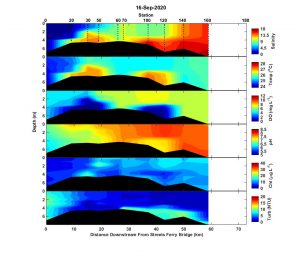
On Monday 28 Sep, the estuary was highly stratified again. Bottom waters were 2 mg/L or less from New Bern to about station 70 and were ~4 or less from station 70 to the mouth. A broad zone of elevated surface chl-a was observed from station 60 to station 140, with a surface maximum of ~40 ug/L at station 100. Downstream of station 100, maximum biomass occurred as a subsurface maximum at 1 to 2 m depth. Two days later on 30 Sep., a fish kill was reported on Flanners Beach. Water from the location of the kill contained high concentrations of the potentially harmful raphidophyte species, Heterosigma akashiwo. Microscopic observation of surface water from station 100 contained very few Heterosigma akashiwo cells. The community was primarily cryptophytes, dinoflagellates, and small diatoms that are typical for this time of year and not known to harm fish. During an unrelated sampling trip on 2 Oct., I observed an ongoing fish kill near the mouth of Slocum Cr. There was a mix of actively dying and menhaden that had been dead for a day or two. I microscopically examined water samples collected from the fish kill area and from the Neuse outside the fish kill area. Low concentrations of Heterosigma akashiwo were present but the low observed concentrations have not been previously related to fish kills. (image below)
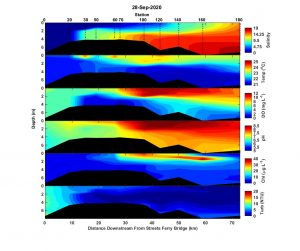
Stay well,
Nathan
